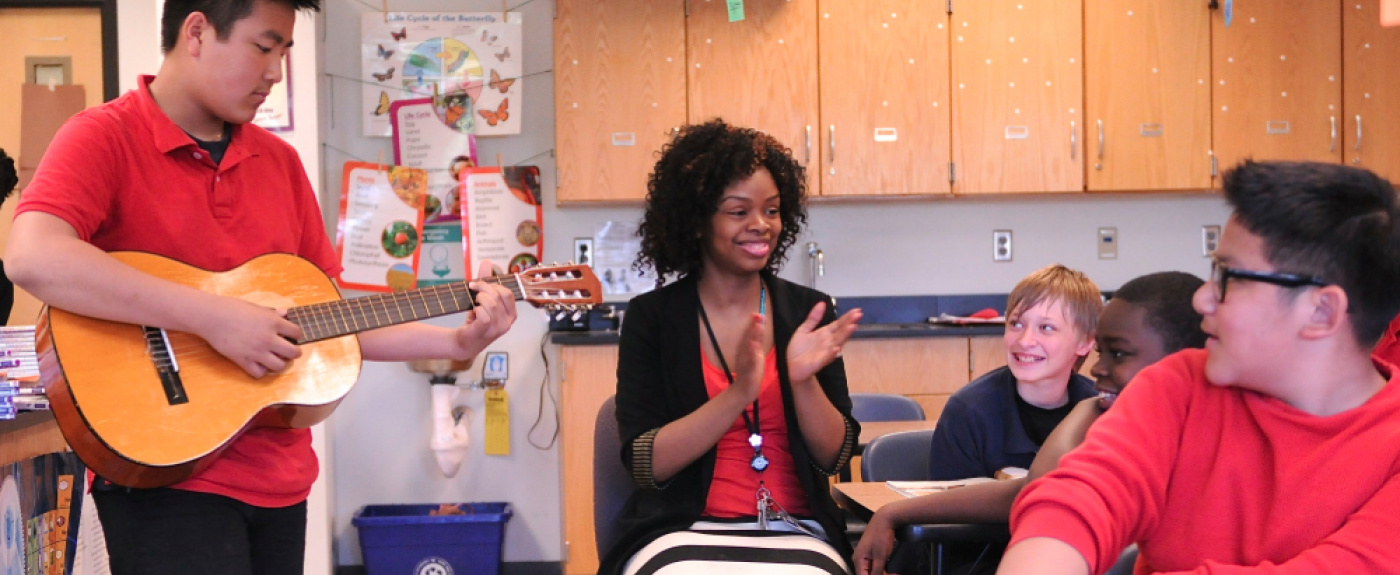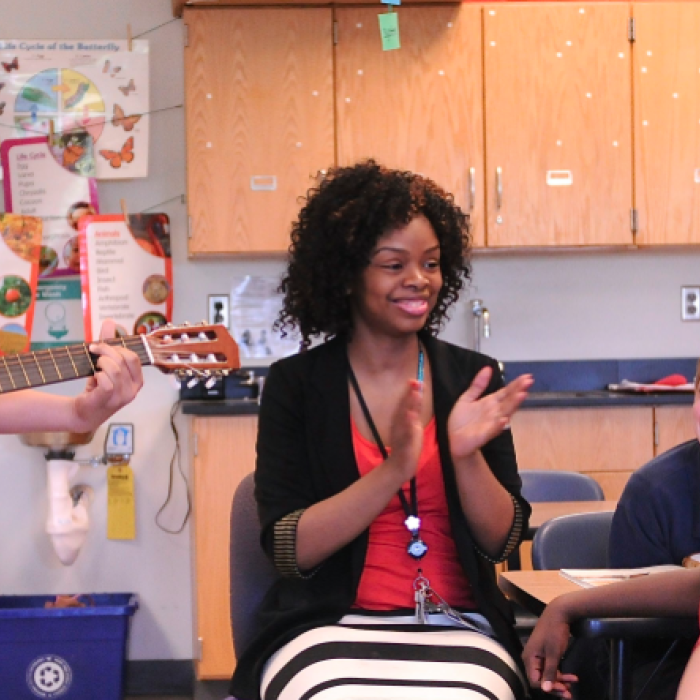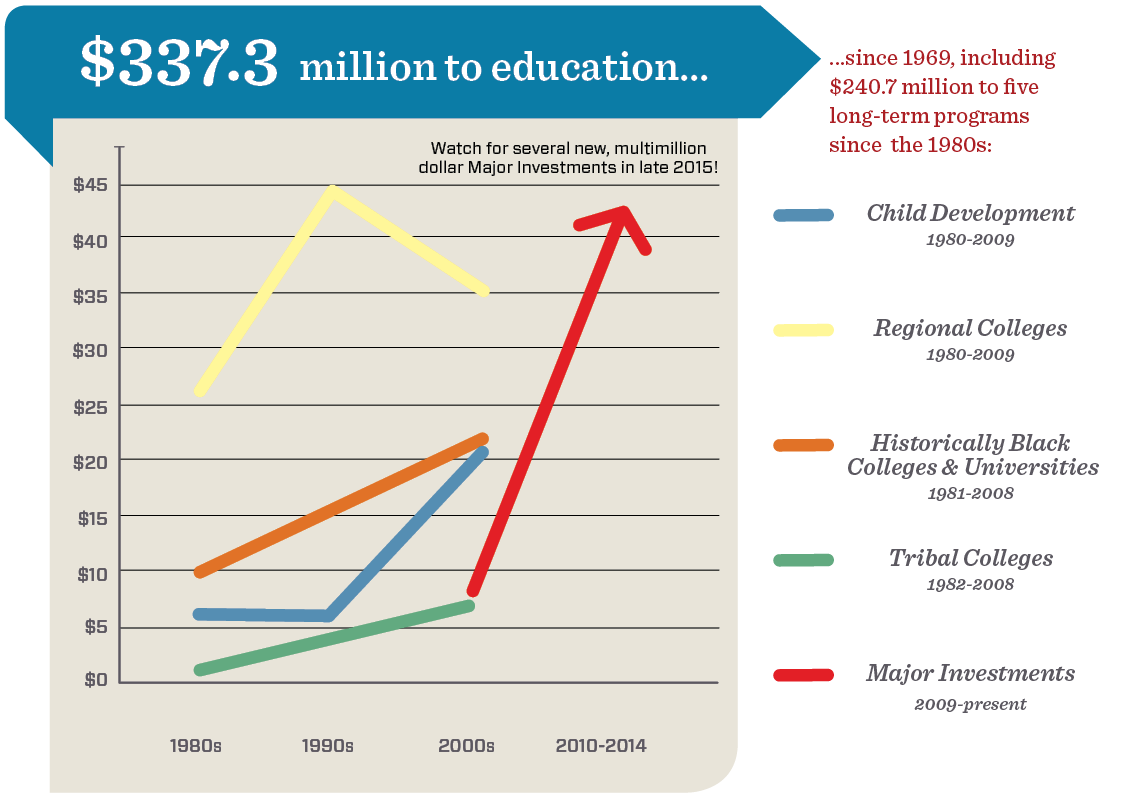Over six decades, the Foundation has worked to improve education using broad strategies that encompass grants to colleges and universities, and investments in Bush Fellows.
But in 2009, the Foundation focused its resources on a specific education goal: increase the percentage of students from all backgrounds who attain postsecondary success. Today, we are pursuing this goal in two ways — Major Investments and Education Ecosystem Grants.
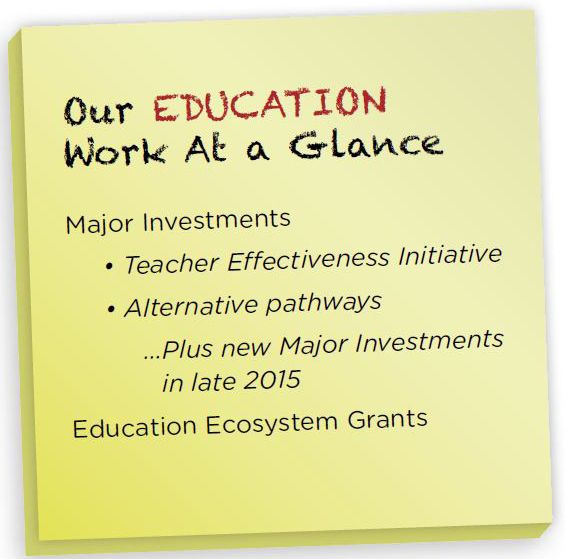
Through Major Investments, the Foundation invests in large, long-term grants focused on specific education improvements. This developing portfolio began with the $40 million Teacher Effectiveness Initiative in 2009. We invested in a second Major Investment in 2014 that explores alternative pathways to teacher licensure. And we'll launch several new Major Investments by the end of 2015, with more to follow in future years.
To support these Major Investments, we began offering Education Ecosystem Grants in 2014. These provide operating support to organizations that help create an education ecosystem where other organizations can succeed in reducing disparities and improving student outcomes.
The five stories that follow spotlight only a sample of grantees’ education efforts in the region. Much like Archibald Bush’s early investments, they illustrate how individuals and organizations are thinking bigger and thinking differently about how to reach better educational outcomes for all students in the region.
Co-Teaching for Success
Josh Engel pretty much always knew he wanted to be a teacher. “Teachers were very impactful in my life,” he says. “I am the youngest of five boys, so I never had a younger brother to help when I was growing up. I wanted to someday have the opportunity to help younger people. That’s why I became a teacher.”
Engel earned his teaching degree from Minnesota State University, Mankato (MSUM) in 2012, and entered a two-year co-teaching fellowship program borne out of a partnership between MSUM and Mankato Area Public Schools.
Reflecting Student Diversity
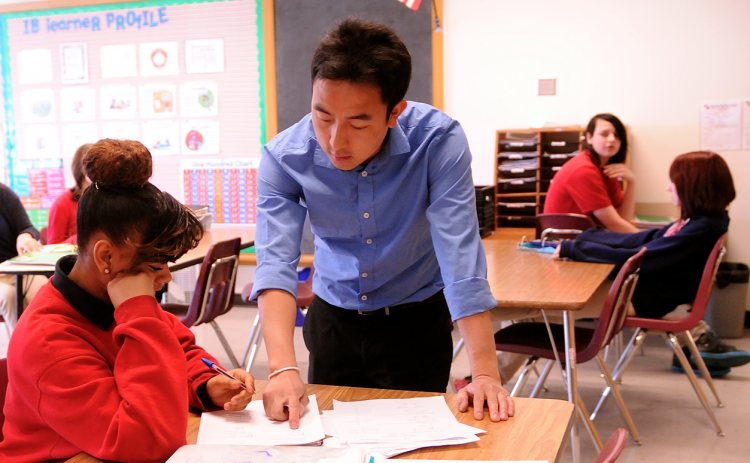
Vang Yang, a teacher in the Saint Paul Public Schools
Patrick Duffy and his colleagues at the Saint Paul Public Schools (SPPS) have been working for years to solve a puzzle common across K-12 schools — in an urban district where the academic achievement gap splits along racial and ethnic lines, how it can diversify the teaching workforce to better serve its students.
“We think it’s important in boosting achievement for our students of color that they see themselves reflected in the curriculum and instruction,” says Duffy, director of leadership development forSPPS. “To do that, we need to hire teachers whose life experiences reflect our students’ lives.”
Driving Improvement with Data
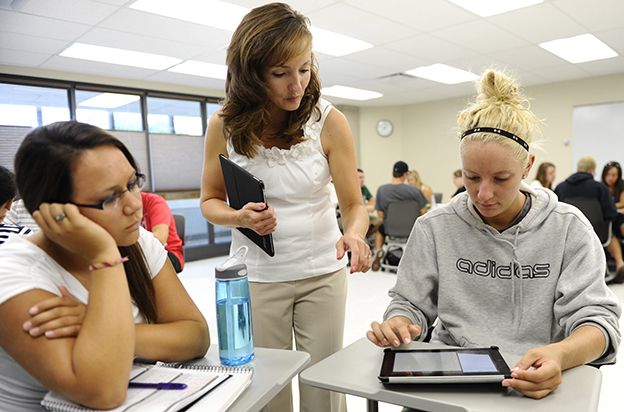
Stacy Duffield, North Dakota State University
Associate Professor Stacy Duffield and her colleagues at North Dakota State University have always wanted to create the best teacher-preparation program in the nation. But it wasn’t until they began collaborating with the 13 other partners in the Foundation’s Teacher Effectiveness Initiative that they were able to collect the robust data that drive their improvement strategies today.
Forging a New Path to Teaching
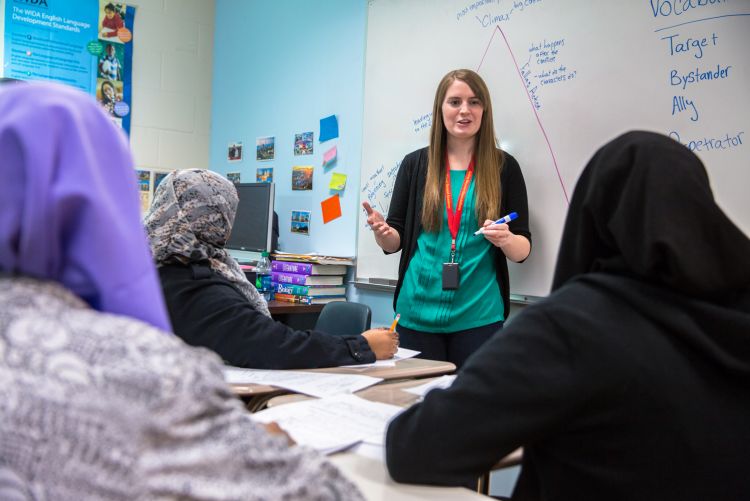
Claire Sagstuen, a new teacher from the TFA/UMN program (Photo Steve Niedorf)
Most educators begin their careers after earning a degree from a traditional teacher preparation program. But in some regions, the demand for teachers in areas of need has encouraged education leaders to develop new ways to recruit and prepare them.
In the Twin Cities, for instance, the national organization Teach for America (TFA) has partnered with the University of Minnesota to launch a new teacher-preparation program that will prepare urban educators who come from nonteaching backgrounds.
Customizing Learning through Technology
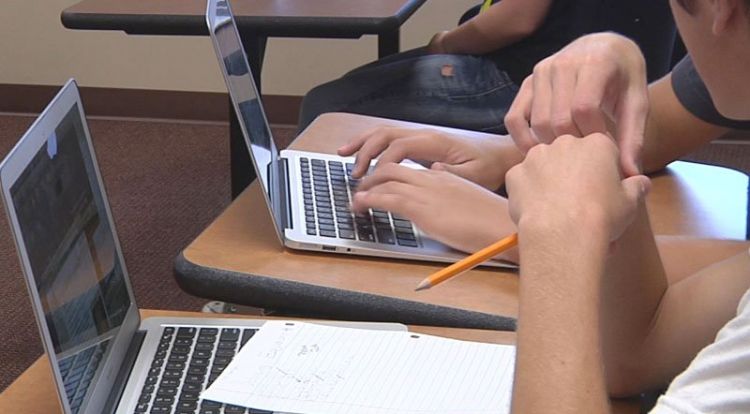
Two years ago, Watertown High School began offering some of its students a chance to customize what they studied and to set their own pace of learning. Principal Mike Butts is leading the school’s customized learning program, but he credits another organization in South Dakota’s education ecosystem — Technology and Innovation in Education (TIE) — for the early thought leadership that made the program possible.
“TIE is leading the customized learning movement in South Dakota,” Butts says. “It brought together the think tank of education leaders that developed the program, and today trains teachers at customized learning programs across the state in how to ensure students succeed.”
